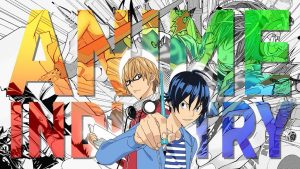Despite the emergence of new technologies, 2D animation continues to be a widely used traditional technique, partly thanks to the magic involved in drawing the pieces that will be animated afterward by hand. This does not mean that 2D animation is carried out without technologies, on the contrary, they have reached two-dimensional animation and have made it better.
What is 2D animation?
This type of animation is one of the most used in the creation of animated cartoons and films, as well as it is widely used to make corporate videos, educational material, and endless material.
But, first of all, you have to understand that a 2D shape to be animated is an object that has two dimensions and is placed on a flat surface. We can say that these shapes and objects have an area, but not volume.
It is especially important that, unlike 3D animation, 2D animation brings characters, objects, and backgrounds to live always in a flat two-dimensional space. But not only figures can be two-dimensional, but figures also provided they have width and length. If we use terminology from the field of mathematics. We can say that both concepts, both 2D and 3D, are nothing more than different geometric configurations. The difference between them is in the case of 2D animation, two values are required, while 3D requires three to know its position.
Knowing this, the rest is simple
To know the origins of animation, you have to go far back in time, to the time when an expert in anatomy, Luigi Galvani (1737-98), experimented with electrical impulses to stimulate frog legs. In English, Animation is an acronym for ” animal ” and ” motion ” ( animal and motion).
Thus, 2D animation implies giving any image movement as long as it is in a two-dimensional space. In this type of animation, the drawings and images are combined in a single sequence. In this way, when played together, they provide the sensation of movement.
What are the main aspects of 2D animation?
Next, we show you what are the basic aspects that you must take into account if you are going to work with 2D animation :
- The sketch of the drawings
- A suitable design adapted to the needs of the characters
- Creating storyboards
- Create special effects
- Animation of movie scenes
- Do not put aside the funds that will serve as a transition
And this is fundamental: the mission, the objective pursued by creating an animated video is to convey a message or tell a story involving the audience and creating a great experience for them.
How do you work with 2D animation?
In general, we can say that there are two types of animation process, that of 2D animation and that of 3D. In both, the animation process takes place in three phases.
To carry it out, tools are needed that allow it to do so, and it is essential to follow the determined process that includes aspects such as those we have discussed before incorporating storyboards, for example. The professionals who carry it out are vitally important to the success of the project.
Knowing this, let’s see what are the three phases that a 2D animation project must go through.
The pre-production phase
Pre-production is the first step for any piece. It is at this time that the entire team of professionals has to create. And develop the story, create the script and the characters and do something as important as the storyboard. As it is the stage in which everything is prepared, all possible efforts must be devoted to it.
The storyboard has to contain the most important details of the argument and represent them graphically and very visually.
Then it is time for the characters, creating backgrounds and any other visual aspect. In this case, we always start from simpler drawings up to, which we progressively enrich until they become the final images. Also here the color palettes are decided.
The production phase in 2D animation
There is a clear objective in this phase of the animation process: to use all the elements that have been created in the previous stage to start producing the different scenes. As part of this phase, we can include the creation of the backgrounds to the animation. Both of the actions of the characters give them a movement that is perceived as natural as possible.
Likewise, a debugging process is carried out for all those elements that are not going to be used. And the so-called exposure sheet is created. This document is essential in production since it includes the most important for the content piece. Among the collected aspects, we point out any action and timing of the scenes, the size of the soundtrack and the dialogues that it will have, all the layers of animation that it will carry, the backgrounds for the scenes, and the perspectives that will be used.
The final stage: post-production
The final stage in 2D animation post-production. At this time, the only objective pursued is to improve as much as possible everything that has been done previously. Each of the aspects and elements that make up the animation is reviewed (duration of each scene, light behavior, movement …). So that the story that is told and the message that is transmitted can reach the user who views it. All these elements must be correct, and appropriate to the needs of the animation.
When the professionals verify that everything is correct. It is the moment in which we start the rendering. To generate the final piece with the format or formats that are needed.

